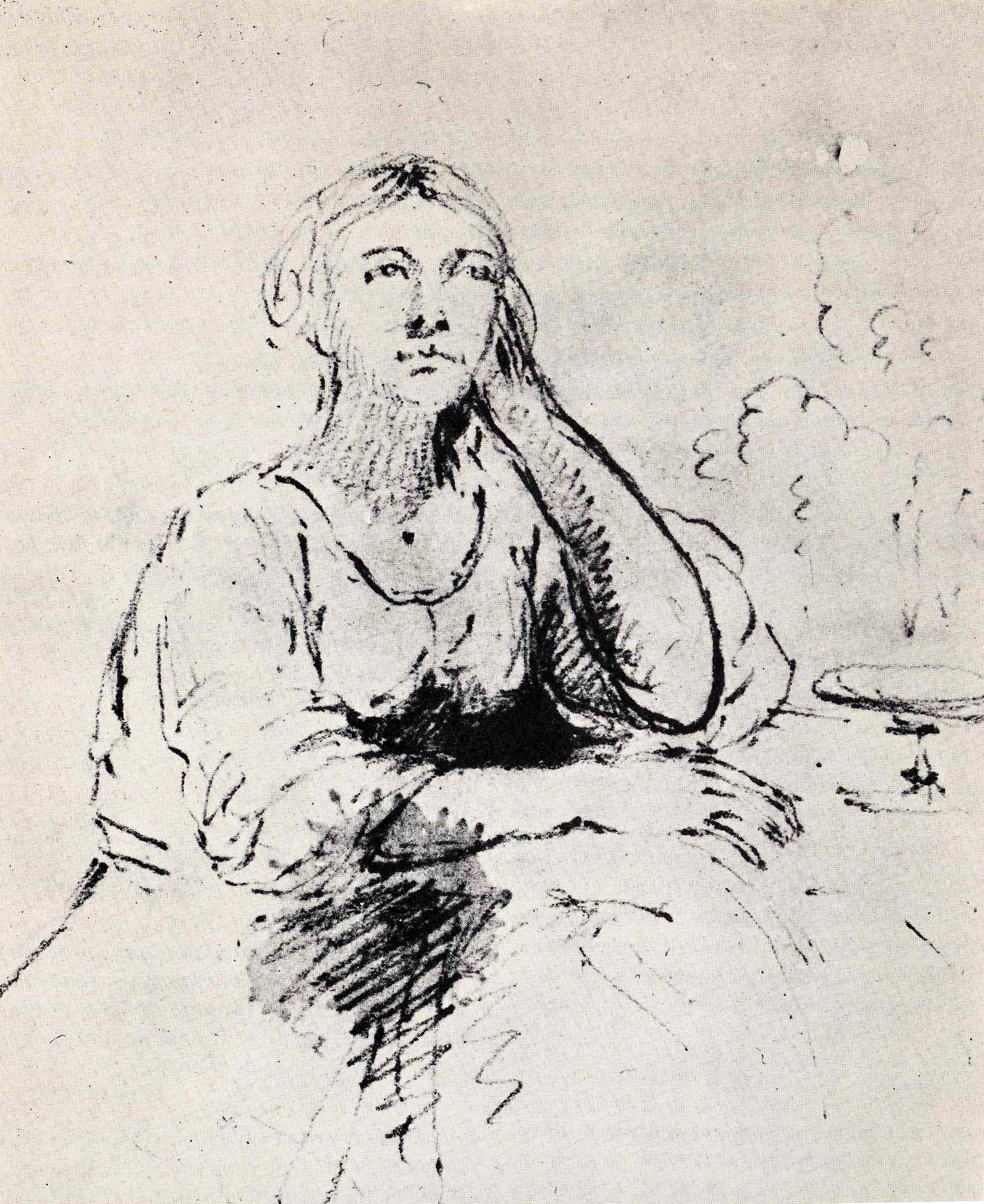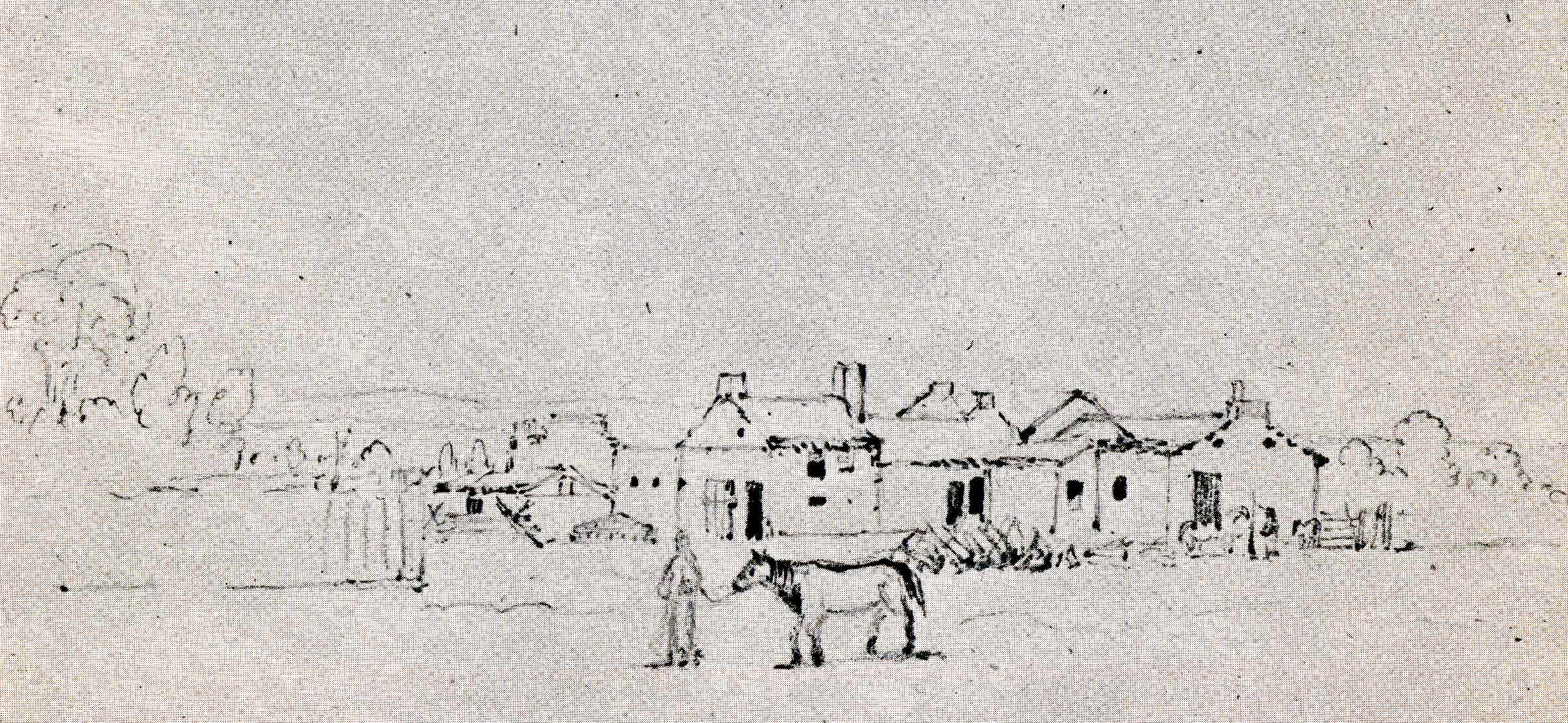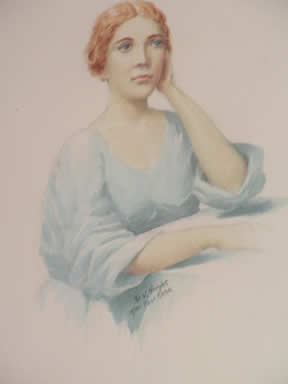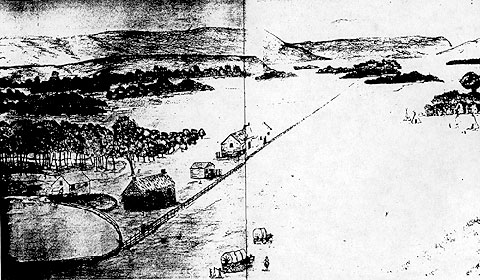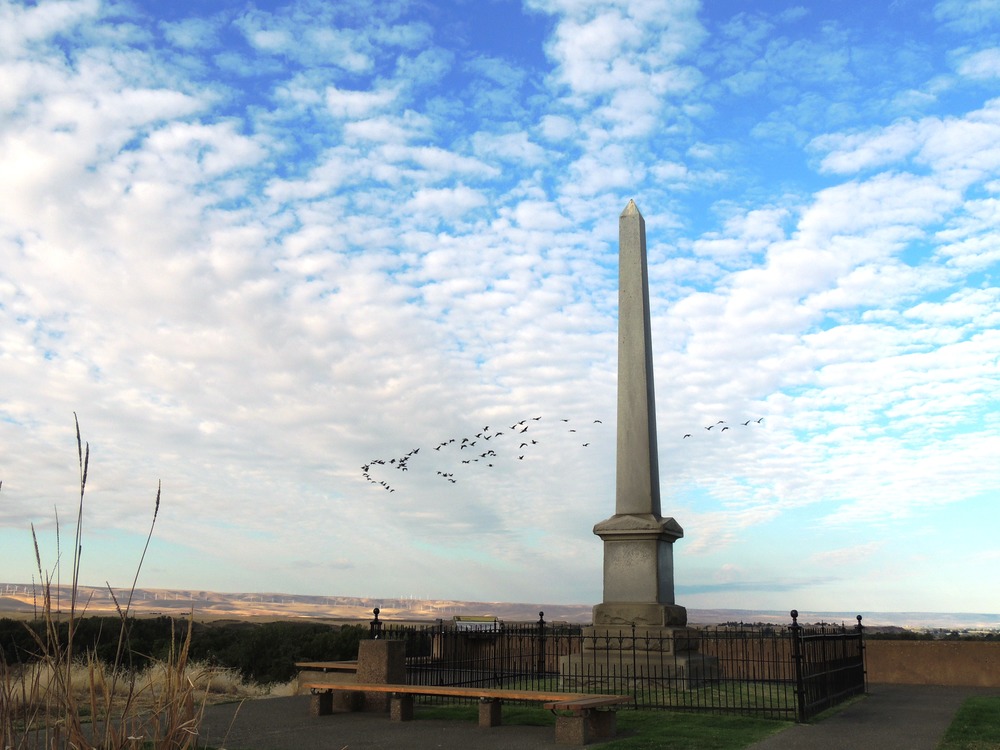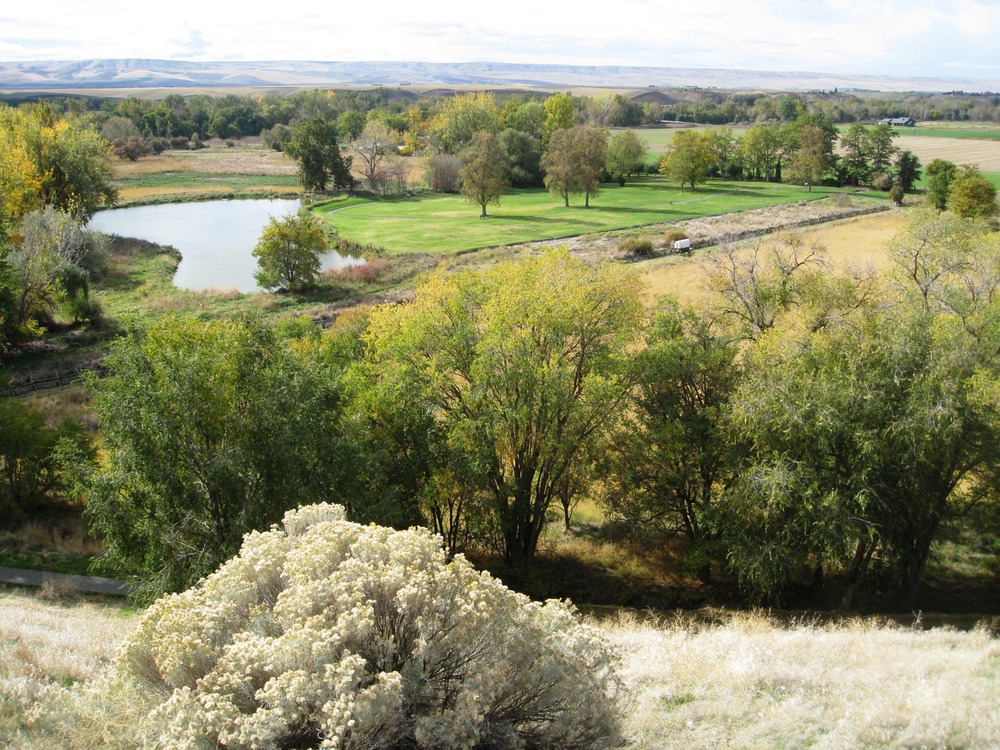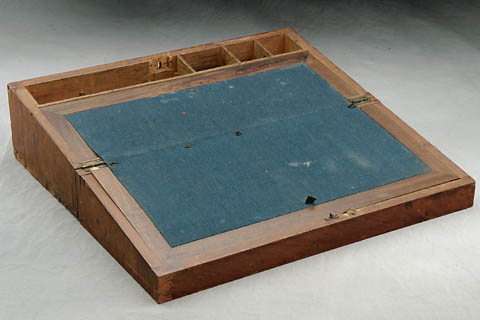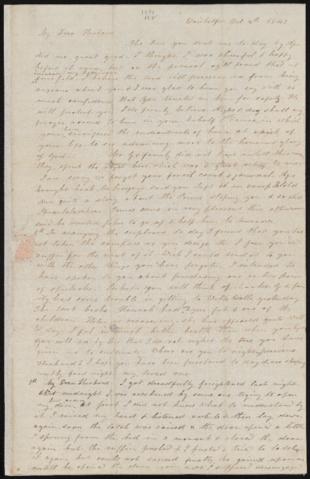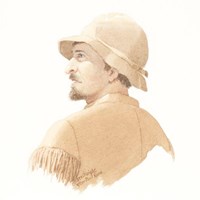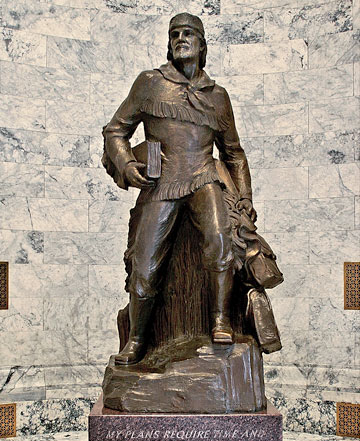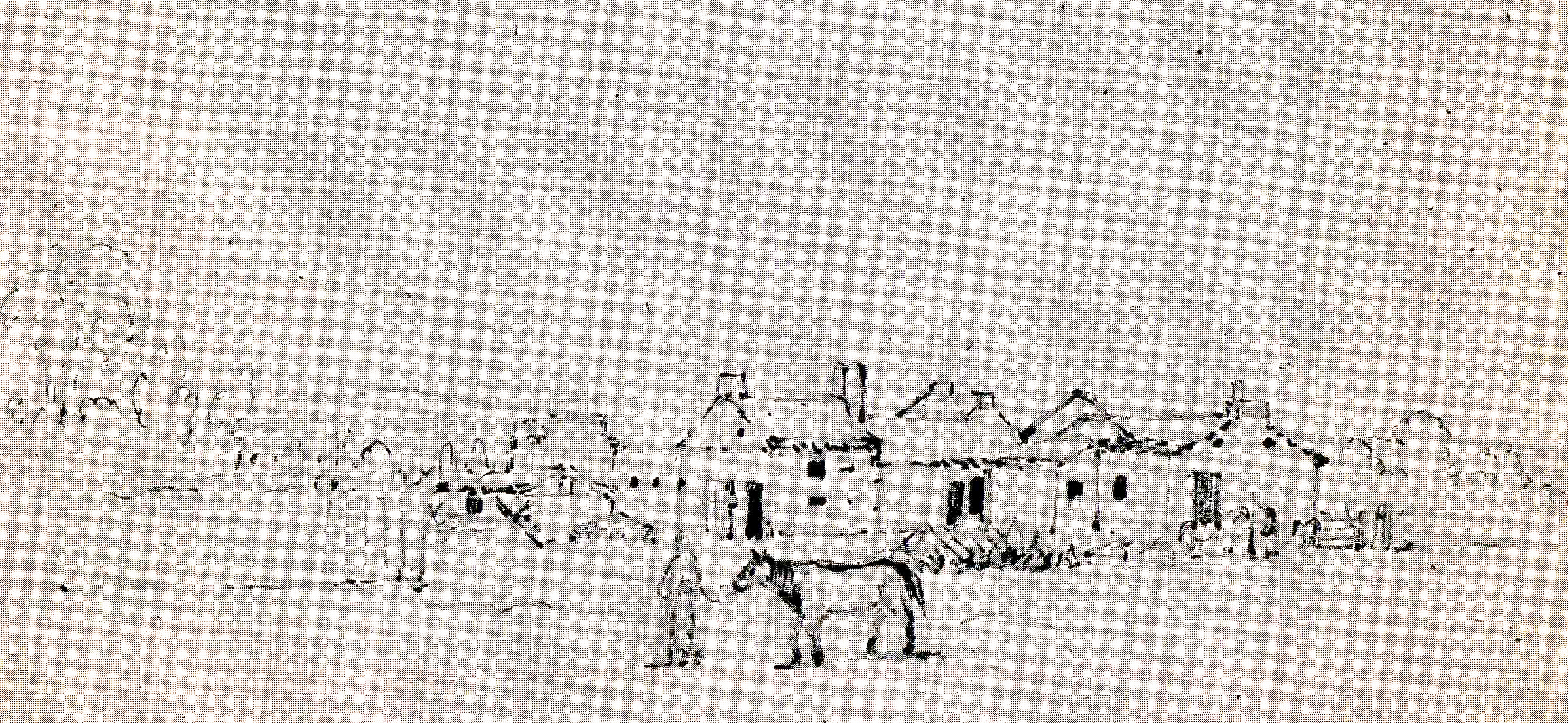Missionary Narcissa Prentiss Whitman is probably Old Oregon’s most famous and tragic woman. Her reputation ranges from heroic to intolerant. In 1836, she moved west with her husband, Dr. Marcus Whitman, to establish a mission. Determined to Christianize and civilize the Cayuse Indians of the Columbia Plateau region, their goals were unreasonable, and eventually Narcissa became disillusioned. The Cayuse resisted the Whitmans' efforts and in angry reaction murdered her and her family in 1847, thereby sealing her place in Oregon and Pacific Northwest history.
Born in Prattsburg, New York, into a large, middle-class family, Narcissa eagerly embraced the moral and religious views espoused by her mother and the evangelists of the Second Great Awakening. Converted to Christianity in 1819 at the age of eleven, she hoped to become a Presbyterian missionary. While she had many of the talents required for this demanding career—commitment, education, voice, energy, and domestic skills—she knew nothing of cultural diversity. Her insular village years offered no preparation for work among Native Americans.
Because she was single, the American Board of Commissioners of Foreign Missions rejected her application as a missionary. Her marriage to Dr. Marcus Whitman, who shared her desire to bring Christianity and American civilization to Native people, overcame this hurdle. They enjoyed a solid marriage, based on mutual respect and love.
In 1836, the newlyweds traveled overland to Oregon with Reverend Henry and Eliza Spalding and William Gray. Narcissa kept a journal of the trip—the first documented crossing of the plains to the Northwest by a white woman—but nowhere did she explain the series of disputes that led the couples to establish separate missions. The Whitmans set down their mission at Waiilatpu (near present-day Walla Walla, Washington) among the Cayuse, while the Spaldings built a mission at Lapwai (near present-day Lewiston, Idaho) among the Nez Perce. The split meant increased labor and loneliness for Narcissa.
Accepting spartan conditions in an adobe cabin at Waiilatpu, about twenty-five miles from the Hudson's Bay Company's Fort Walla Walla, Narcissa set about missionizing. In March 1837, she gave birth to Alice Clarissa, who was the joy of her life.
The Cayuse expressed pleasure with Narcissa's daughter and her singing and Bible stories, but she did not reciprocate. She complained about Cayuse culture, including the diminished roles of women and the elevated roles of shamans. It did not take long, however, for the Indians to reject the Whitmans’ teachings and their pleas that the Cayuse abandon their way of life.
Tragically, Alice drowned in 1839. The Whitmans had no other children, but Narcissa mothered many children of the trappers and immigrants who passed through the mission.
Medical calls gave Marcus opportunities to escape the isolation and conditions of the mission, but Narcissa remained behind. Her family letters recounted her loneliness and other personal conditions, as well as missionary developments. In 1842, Marcus traveled to Boston, persuading officials to continue its troubled Oregon mission. Again, Narcissa stayed behind.
Narcissa spent some time in regional Methodist stations, enjoying a furlough that featured cultured conversation and lively revivals. She returned to Waiilatpu depressed and near death. Her recovery was aided when the Whitmans assumed responsibility for the care of seven orphaned children of the Sager family and her transformation from a missionary to a farm wife, with responsibilities for home and child rearing. Her last letters contain scant detail about the Cayuse, who complained of her neglect and her emphasis on white schooling. Her indifference was a factor in what became known as the Whitman Massacre.
-
![Narcissa Whitman, about 1846.]()
Whitman, Narcissa, Paul Kane sketch of, ca. 1846.
Narcissa Whitman, about 1846. From Thomas Vaugan, ed., Paul Kane, The Columbia Wanderer: Sketches, Paintings, and Comment, 1846-1847, OHS Press, 1971, p. 52.
-
![Whitman Mission buildings at Waiilatpu, about 1846.]()
Whitman Mission, Paul Kane sketch of, ca. 1846.
Whitman Mission buildings at Waiilatpu, about 1846. From Thomas Vaugan, ed., Paul Kane, The Columbia Wanderer: Sketches, Paintings, and Comment, 1846-1847, OHS Press, 1971, p. 16.
-
![]()
An idealized sketch of Narcissa Whitman.
Courtesy National Park Service -
![]()
Sketch of Narcissa Whitman.
Unknown
-
![]()
Sketch of the Waiilatpu Mission, by Nancy Osborn, c.1847.
-
![]()
Whitman monument.
Courtesy National Park Service -
![]()
Waiilatpu (Whitman) Mission site.
Courtesy National Park Service -
![]()
Narcissa Whitman's writing desk, 1836.
Oregon Historical Society Museum Collection, 2000
-
![]()
Letter from Narcissa Whitman to Marcus Whitman, 1842.
Oregon Historical Society Research Library, Digital Collections, Mss1203_B1F7_011
-
![]()
Possible sketch of Marcus Whitman, based on a sketch by Paul Kane.
Courtesy National Park Service
Related Entries
-
![Marcus Whitman (1802–1847)]()
Marcus Whitman (1802–1847)
Marcus Whitman left his mark on Oregon Country as an early missionary t…
-
![Whitman Murders]()
Whitman Murders
The 1847 murders of frontier missionaries Marcus and Narcissa Whitman n…
-
![Whitman Murders Trial]()
Whitman Murders Trial
On November 29, 1847, Protestant missionaries Marcus and Narcissa Whitm…
Related Historical Records
Map This on the Oregon History WayFinder
The Oregon History Wayfinder is an interactive map that identifies significant places, people, and events in Oregon history.
Further Reading
Dodd, Lawrence. Narcissa Whitman on the Oregon Trail. Fairfield, Wash.: Ye Galleon Press, 1985.
Drury, Cliffford M. Marcus and Narcissa Whitman and the Opening of Old Oregon, vols 1 and 2. Glendale Calif.: Arthur H. Clark Company, 1973.
Hayes, Jeffrey A. "The Marcus and Narcissa Whitman Collection. Updating and Improving Collection Guides in the OHS's Research Library." Oregon Historical Quarterly, vol. 123, no. 4 (Winter 2022): 390-398.
Jeffrey, Julie Roy. Converting the West a Biography of Narcissa Whitman. Norman: University of Oklahoma Press, 1991.
Marcus and Narcissa Whitman collection, 1834-1847. Oregon Historical Society Research Library Digital Collections.

